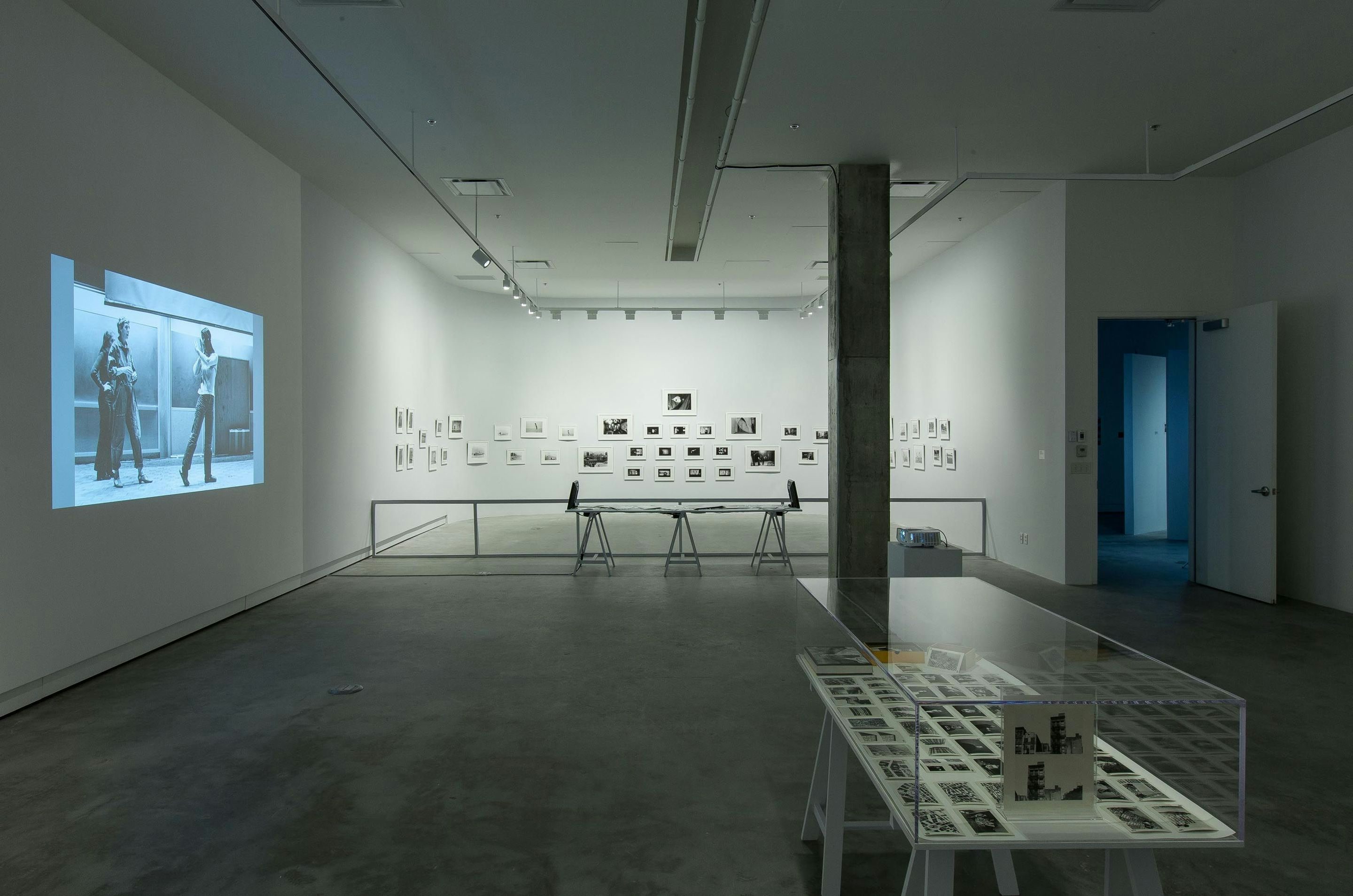
Babette Mangolte
2013.01.25 - 04.20
Babette Mangolte: An Exhibition and a Film Retrospective
BARBARA CLAUSEN
Babette Mangolte: An Exhibition and a Film Retrospective1 presents a series of works by the French-American artist and filmmaker that span her early pioneering documentary interest in dance, performance art and theatre in New York City during the 1970s as well as her films and more recent site-specific installations. The exhibition reflects upon Mangolte’s profound intellectual fascination with the time- and site-specificity of perfor-mative practices and the perception of time and space. That interest resonates in her installations as well as her still and moving images, on performance and spectacle, the subjective camera and the exploration of vernacular, as well as her explorations of landscape and ecological history.

Mangolte arrived in New York from Paris in 1970, at a time when the Manhattan Downtown art and performance scene offered the artistic means for site-specific, socially aware and process-based art practices that found their expression not just in live action, but also in photography, video and film. Mangolte, inspired by what she saw, regularly documented the performance work of artists such as Robert Whitman, Stuart Sherman and Joan Jonas, dancers such as Yvonne Rainer and Trisha Brown, as well as theatre directors like Richard Foreman and Robert Wilson. While photography had brought Mangolte to performance art, the subject of photography in her films led her to make work about looking as well as the production of art, mirrored within the work of the artists, the dancers and the performers she followed. Mangolte captured and gave vision to the key aspects of the time: the rejection of ontological self-reflexivity, the use of operational time, literalism and the effect of space on seeing.1 In her early films such as What Maisie Knew (1974), The Camera: Je, La Caméra: I (1977), Water Motor (1978) and The Cold Eye (My Darling Be Careful) (1980), the dynamic between the recording apparatus, its subjects and the prota-gonists is central to her aim for the audience “to reassess the way they look at film.”3 It was in these years that Mangolte’s ongoing interest in how we understand the present through the past developed, and it would remain an incentive for her films on the stagings of historical performances, such as Four Pieces for Morris (1993) and Seven Easy Pieces by Marina Abramovic (2007).
In her installations Looking and Touching (2007), Movement and Stills (2010) and the new Rushes Revisited (2012), Mangolte explores her own continuous re-reading of the scenography and setup of her first exhibition How to Look… (1978), which she created for the then newly founded PS1 in Long Island City, New York. How to Look… was a three-dimensional extension of her first feature-length film, The Camera: Je, La Caméra: I, and an early example of Mangolte’s unique capacity to differentiate and articulate the medium of film within photography, and vice versa, through various performative practices.
From early on, Mangolte anticipated performance art’s expansion from a mode of self-expression rooted in the “live-event” to a time- and site-specific practice—a mode of production that continues to explore the push and pull between the immediacy of the archive and the spectacle of cultural memory.
Mangolte’s installations and videos address the relationship of the human body within space, examining the visibility of the invisible that determines our cognitive capacities. Particularly in her latest work, Éloge du Vert (2012-2013), she explores how we perceive and experience space and the passing of time through digital media. She intertwines the time specificity and shifting aesthetics of past and present media by juxtaposing two temporal moments of her own work: on the one hand, her past studies in film on the human body in urban space, and on the other hand, the loss of the colour green and the changing sense of space through the digitalization of media.
Babette Mangolte reflects the collective imaginary of the aesthetics linked with conceptual and performative practices of the past in the echo of today’s desire to create an aesthetic of timelessness. She nourishes the cultural memory of an entire decade and the ways in which performance-based work is essential to as well as emblematic of our contemporary desire to look back at the past to better understand the present and the future.